Exogenous activation of the adhesion GPCR ADGRD1/GPR133 protects against bone loss by negatively regulating osteoclastogenesis
- PMID: 40644539
- PMCID: PMC12248284
- DOI: 10.1126/sciadv.ads3829
Exogenous activation of the adhesion GPCR ADGRD1/GPR133 protects against bone loss by negatively regulating osteoclastogenesis
Abstract
Adhesion G protein-coupled receptors (GPCRs) play crucial roles in numerous physiological and pathological conditions. However, the functions of adhesion GPCRs remain poorly understood because of the lack of effective modulators. Here, we used the adhesion GPCR D1 (ADGRD1/GPR133) as a model to unveil a strategy for finding exogenous agonists that target adhesion GPCRs while revealing previously unidentified functions of ADGRD1. We identified the small molecule GL64 as a selective agonist of ADGRD1. GL64 activates ADGRD1 by mimicking the stachel sequence. Using GL64 as a chemical tool, we demonstrated that ADGRD1 negatively regulates bone loss by inhibiting osteoclastogenesis. The cAMP-PKA-NFATC1 pathway was identified as the downstream signaling pathway of ADGRD1 in osteoclasts. Furthermore, administering GL64 prevented bone loss and suppressed osteoclast activity in the osteoporosis mouse model induced by ovariectomy. Our findings provide mechanistic insights into the activation of adhesion GPCRs by exogenous agonists and underscore the therapeutic potential of targeting ADGRD1 in osteoclast-related diseases.
Figures
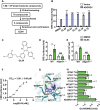
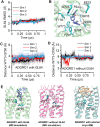
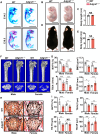


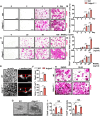

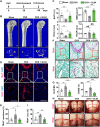
Similar articles
-
The mechanosensitive adhesion G protein-coupled receptor 133 (GPR133/ADGRD1) enhances bone formation.Signal Transduct Target Ther. 2025 Jun 30;10(1):199. doi: 10.1038/s41392-025-02291-y. Signal Transduct Target Ther. 2025. PMID: 40583059 Free PMC article.
-
Anti-osteoporosis effect of Semen Cuscutae in ovariectomized mice through inhibition of bone resorption by osteoclasts.J Ethnopharmacol. 2022 Mar 1;285:114834. doi: 10.1016/j.jep.2021.114834. Epub 2021 Nov 18. J Ethnopharmacol. 2022. PMID: 34801609
-
Yougui pills prevent ovariectomy-induced bone loss by suppressing Th17 response and IL-17/NF-κB pathway.Ann Med. 2025 Dec;57(1):2529576. doi: 10.1080/07853890.2025.2529576. Epub 2025 Jul 7. Ann Med. 2025. PMID: 40622369 Free PMC article.
-
Deciphering complexity of GPCR signaling and modulation: implications and perspectives for drug discovery.Clin Sci (Lond). 2025 May 20;139(10):463-77. doi: 10.1042/CS20245182. Clin Sci (Lond). 2025. PMID: 40400289 Free PMC article. Review.
-
Osteoporosis Preclinical Research: A Systematic Review on Comparative Studies Using Ovariectomized Sheep.Int J Mol Sci. 2022 Aug 10;23(16):8904. doi: 10.3390/ijms23168904. Int J Mol Sci. 2022. PMID: 36012173 Free PMC article.
References
MeSH terms
Substances
LinkOut - more resources
Full Text Sources
Medical
Miscellaneous

